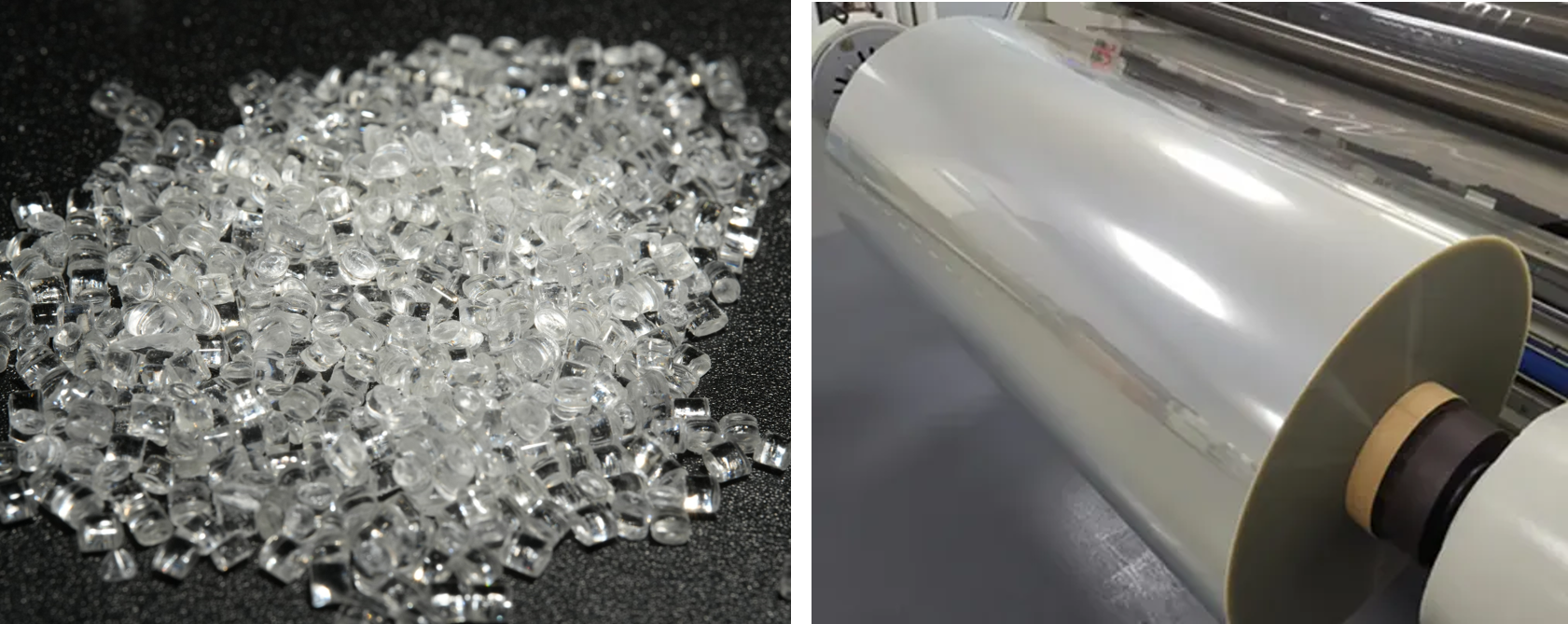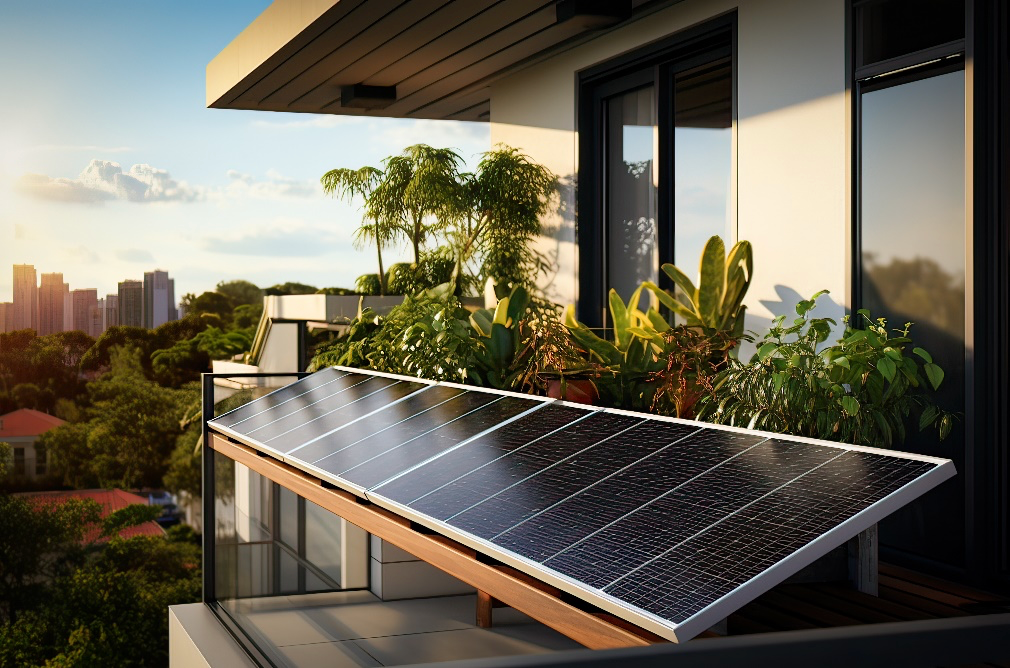
Connecting Reality and Looking Forward: PET Materials in the Solar Panel Industry
With the increasing global attention and demand for clean energy, the photovoltaic industry is undergoing unprecedented development. As a crucial component of photovoltaic modules, photovoltaic backsheet materials play a key role in improving photovoltaic conversion efficiency, reducing costs, and addressing environmental challenges.
The photovoltaic sector is going through an unheard-of development as a result of the growing global interest in and need for sustainable energy. Solar backsheet materials are an essential part of solar modules and are important for enhancing photovoltaic conversion efficiency, lowering prices, and resolving environmental issues.
1. Photovoltaic backsheets: Significance, Composition, and Classification
On the back of solar panels are photovoltaic backsheets, which act as photovoltaic encapsulation materials. They are generally utilized outside to shield solar panels from the effects of environmental elements including light, moisture, heat, etc. and guard against damage to solar cells and encapsulation coatings. Their major job is to protect the insulation from the elements.
Given that the photovoltaic backsheets are the solar panels' outermost layer and have direct contact with the environment, they must perform exceptionally well in terms of temperature resistance, UV radiation resistance, environmental aging resistance, water vapor barrier, and electrical insulation to meet the solar panels' 25-year lifespan.
Photovoltaic backsheets currently have a "sandwich" or "cookie sandwich" structure made of double-sided fluoropolymer composite. "Fluoropolymer -- Adhesive -- PET (polyethylene terephthalate) film -- Adhesive -- Fluoropolymer" makes up these materials. Although the PET film primarily has mechanical and insulating qualities, it has low weather resistance. Fluoropolymer films and fluororesin are the two main types of fluoropolymers, and they both have insulating, weather-resistant, and barrier qualities. Adhesives are primarily made of synthetic resins, curing agents, and functional additives, and they are employed in composite backsheets to join PET film and fluoropolymer.
Depending on the classification of the material used for the backsheets, it is primarily divided into two classes: organic high molecular class, which includes both fluoride and non-fluoride categories, and inorganic material class, which is primarily glass. PET base film is currently protected on the back panels of high-quality solar cell components using fluoride material; the fluoride material utilized varies only in shape and content. In a form including fluorid resin, by means of a particular procedure directly coated on a PET foundation film, that is, a coated backboard, fluoride material is in the form of a fluoride film that is compounded by glue on the PET base film, i.e. a composite backsheets. The backsheets made of fluorine composite is currently most popular.
2. PET film in photovoltaic backsheet

PET is a crystalline polymer that is produced by catalytically combining terephthalic acid (PTA) with ethylene glycol (MEG).It is made of polyester and can withstand temperatures as low as -70°C and as high as 120°C for extended use and 150°C for quick use, respectively. Its mechanical properties are basically unaffected by high or low temperatures. Polyester films are made from PET chips that have been heated, stretched, heated again, extruded, and cast.If it is only stretched in one direction, it is referred to as CPET and is mostly used for packaging.If anything is stretched both longitudinally and transversely, it is referred to be BOPET.Currently, BOPET accounts for more than 95% of PET films, and premium PET films are often used in optical films and solar backsheets.
The PET film, which is a significant part of the backsheets and primarily serves as support and protection. PET is the most popular film used in backsheets because it offers exceptional mechanical strength, reflectivity, and water resistance. As a backsheet film, PET film performs remarkably well, primarily offering mechanical and insulating qualities.
3. Significant growth in the market for PET film
In the supply chain of the solar industry, PET film is one of the most crucial strategic materials. It is a thin film created by biaxially stretching polyethylene terephthalate (PET), a polyester polymer. PET film is a high-end product in the polyester film sector that must meet a variety of performance criteria, including high transparency, minimal haze, and high brightness. This makes it a technologically difficult area of the sector.
The quantity and performance needs of PET film will greatly rise based on the current trend. On the one hand, the demand for PET film is increasing quickly as a result of the solar industry's ongoing development. On the other hand, firms that produce PET film have made advancements in the field of PET film for photovoltaic backsheet, and they have a clear price advantage (PET film accounts for roughly 1/3 of the cost of the backsheet) as well as a somewhat steady supply chain. Modified polyolefin materials have been used in the past by backsheet producers such Royal DSM to try to replace PET film. However, due to concerns with performance and cost, their market share is currently relatively tiny, and PET is still the most extensively used.
According to relevant data, the usage and performance requirements of PET film will see a significant increase. On one hand, Chinese PET film manufacturers have made breakthroughs in the field of PET film for photovoltaic backsheet, with obvious price advantages (the film accounts for nearly one-third of the backsheet cost) and relatively stable supply chains. In the past, overseas backsheet manufacturers like Royal DSM have tried to use modified polyolefin materials as substitutes for PET film, but due to performance and price issues, their market share is currently very small, and PET film is still the most widely used material for backsheets.
Furthermore , differentiated backplate products increase the use of PET and performance requirements. The tendency toward thinner silicon wafers may result in a rise in the thickness of PET film required to protect component. More film will be required for coated, fluorine-free, and transparent backsheets, and additional performance criteria like transparency and weather resistance will be recommended. The amount and significance of PET film production will lead to a large increase in backsheet manufacture.
4. Summary: Connecting Reality and Looking Forward
PET (polyethylene terephthalate) material has grown in popularity in the solar panel industry because of its superior performance and inexpensive cost. The growing expansion of the solar power industry has led to a major rise in the demand for PET-based films used as backsheets for solar panels. Numerous companies have actively developed PET materials that can be used to create solar panel backsheets after observing this market trend. For instance, WK-681, a PET item produced by Wankai New Materials Co.,Ltd, was designed especially for the production of solar panel film. A customized PET material called WK-711, produced by Wankai New Materials Co.,Ltd, is also used to make enhanced solar panel film.

